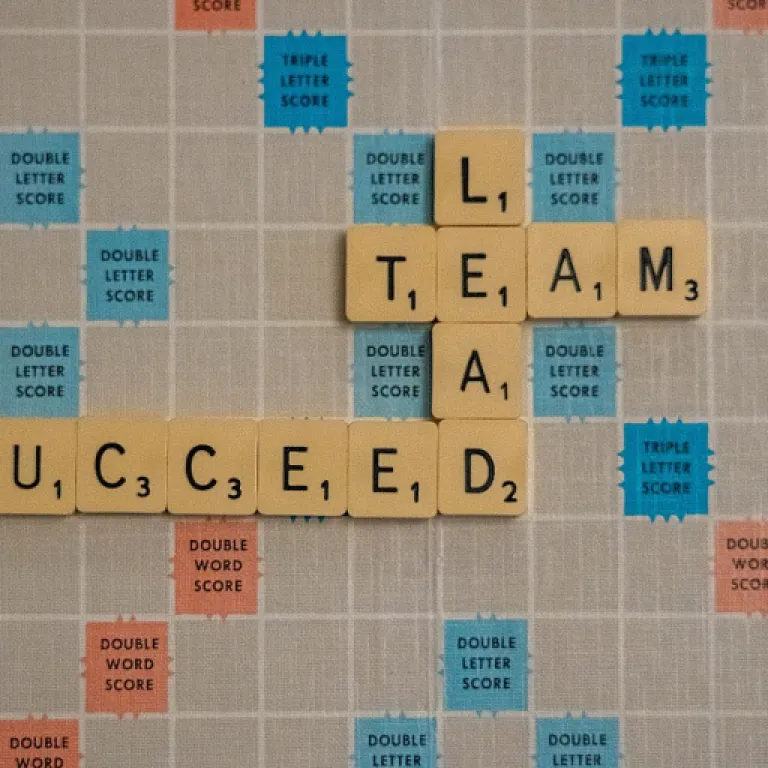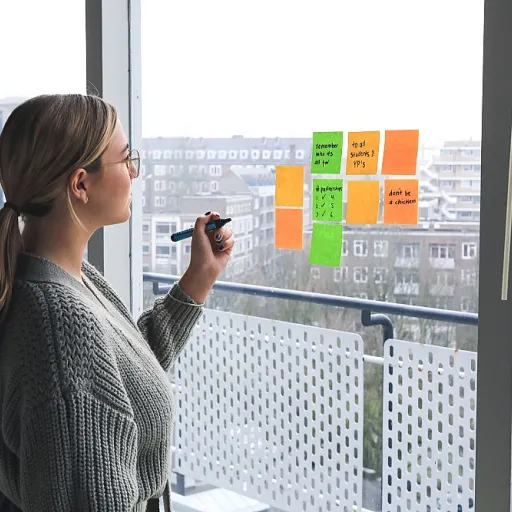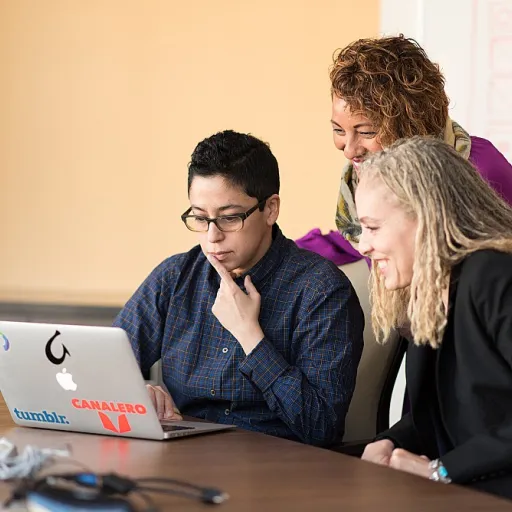
Defining the Roles
Staff Engineer vs. Senior Engineer: Key Role Definitions
When it comes to distinguishing between a staff engineer and a senior engineer, it's essential to understand their distinct roles and responsibilities within an engineering team. A senior engineer often takes on a greater level of project-specific responsibilities. They hold significant technical skills and experience, focusing on executing design plans and ensuring that engineering practices align with the project goals. In this role, they tend to hone their leadership skills, guiding team members and offering insights into best practices without necessarily having a direct managerial responsibility. On the other hand, a staff engineer operates at a higher level of influential authority within the organization. Their role is more strategic, focusing on technical direction and overseeing the broader scope of project developments. They coordinate with multiple teams, solving complex engineering challenges and introducing new technical innovations. Staff engineers play a pivotal role in technical leadership and large-scale project management, which often involves making critical decisions that impact the work of other engineers. Both roles require excellent technical skills and soft skills alike. However, the ability to lead large teams, drive forward meaningful change, and provide direction on complex projects sets the staff engineer apart. For those considering this career development pathway, understanding these nuances plays a crucial part in planning your professional trajectory. In subsequent sections, we will delve into the skills and experience required for each role, their impact on team dynamics, and considerations for making the transition.Skills and Experience Required
Essential Skills and Experience for Engineers
When distinguishing between a staff engineer and a senior engineer, understanding the skills and experience required for each role is crucial. Both positions demand a solid foundation in technical skills, but the depth and breadth of these skills can vary significantly.
Technical Skills and Expertise
Senior engineers typically focus on honing their technical expertise. They are expected to have a deep understanding of engineering principles and best practices. Their responsibilities often include overseeing design plans and ensuring the technical direction of projects aligns with organizational goals. Senior engineers are usually involved in the day-to-day technical work and play a key role in problem-solving and project development.
Leadership and Management Skills
Staff engineers, on the other hand, are expected to possess strong leadership and management skills. While they also need a robust technical background, their role often involves providing technical leadership and guidance to team members. They are responsible for setting the technical vision and ensuring that teams adhere to it. Staff engineers often work closely with management to align engineering efforts with business objectives.
Soft Skills and Team Dynamics
Both roles require excellent soft skills, but the emphasis may differ. Senior engineers need to communicate effectively with team members to ensure smooth project execution. Staff engineers, however, must excel in leadership and team dynamics, often acting as a bridge between the engineering team and upper management. Their ability to influence and motivate teams is crucial for successful project outcomes.
Experience and Career Development
Experience plays a significant role in differentiating these positions. Senior engineers typically have several years of experience in technical roles, focusing on developing their engineering skills. Staff engineers usually have a broader range of experience, including leadership roles, which prepares them for the additional responsibilities of guiding teams and projects.
Career Pathways and Progression
Exploring Career Pathways in Engineering
Transitioning from a senior engineer to a staff engineer involves more than just a change in title. It represents a significant shift in career pathways and responsibilities. Understanding these pathways can help engineers make informed decisions about their professional growth.
For a senior engineer, the focus is often on honing technical skills and managing specific projects. They are typically responsible for overseeing design plans and ensuring that best practices are followed. This role requires a deep understanding of technical aspects and the ability to work effectively within a team.
On the other hand, a staff engineer is expected to take on a broader scope of responsibilities. This includes providing technical leadership and setting the technical direction for projects. Staff engineers often work closely with management to align engineering goals with business objectives. Their role is crucial in guiding team members and fostering a collaborative environment.
Here’s a brief comparison of the career progression:
| Senior Engineer | Staff Engineer |
|---|---|
| Focus on technical skills and project management | Emphasis on leadership and strategic planning |
| Overseeing design and implementation | Providing technical direction and mentorship |
| Working within established frameworks | Influencing engineering practices and policies |
Both roles require a blend of hard and soft skills, but the emphasis shifts as one moves up the career ladder. For those considering this transition, it’s essential to assess your readiness to take on more strategic responsibilities and to lead teams effectively. Understanding these dynamics can pave the way for a successful career transition in the engineering field.
Impact on Team Dynamics
Team Collaboration and Influence
In the intricate world of engineering, both senior and staff engineers play vital roles within a team dynamic. The distinction in how they affect team interactions primarily originates from their unique responsibilities and expectations. Senior engineers often find themselves deeply involved in the day-to-day technical work, executing design plans, and ensuring the engineering projects meet necessary technical standards. They are key contributors, lending their technical skills to propel projects forward. Their focus is often on direct project responsibilities, which requires them to possess a robust suite of technical skills and soft skills to effectively collaborate with team members. Staff engineers, on the other hand, adopt a broader view, frequently falling into roles that involve more oversight. Their responsibilities expand beyond individual project tasks to include an integral part of the team’s technical direction and overall development strategy. While they still engage in technical hands-on work, they increasingly focus on technical leadership. This entails mentoring less experienced engineers, guiding technical decisions, and sometimes steering the team towards best practices and root issue solving. The interaction within teams involves various layers of collaboration and communication. While senior engineers often excel in technical problem-solving within a team, staff engineers enhance the collaborative environment by providing leadership. Referencing technical concepts in regular dialogues and overseeing design implementations are a few tasks that staff engineers might engage in to ensure smooth team operations. Effective team dynamics necessitates senior and staff engineers to harmonize their approaches. Integrating hard skills with leadership allows for a balanced atmosphere conducive to growth, morale, and productivity. In essence, as you deliberate on transitioning between these roles, understanding their impact on team dynamics is crucial. It is important to recognize the weight of the collaborative influence both roles can yield and the symbiotic relationship that can foster team success.Compensation and Benefits
Evaluating the Rewards: Compensation and Benefits
Navigating the career ladder from a senior engineer to a staff engineer comes with an array of changes, many of which relate to compensation and benefits. These shifts are commonly reflective of the responsibilities, expertise, and leadership required at this advanced level. Senior engineers typically have a key role in project execution and technical development. However, moving into a staff engineer position often means taking on additional responsibilities, such as overseeing design plans and providing technical direction for the entire team.- Compensation Differences: It's crucial to understand that the enhanced responsibilities of staff engineers usually come with a higher salary. The average pay is generally higher than that of a senior engineer, reflecting the added leadership and technical prowess expected at this level.
- Benefits and Perks: Often alongside the financial compensation packages, staff engineers may receive enhanced benefits. This might include increased opportunities for management training, additional paid time off, and other incentives like stock options. These added perks recognize the value of leadership and long-term contributions to the organization.
- Performance-Based Incentives: Many organizations offer performance bonuses as part of the compensation structure for staff engineers. These incentives are typically tied to project success, technical innovation, and the overall growth of their engineering teams.
Making the Transition
Navigating the Transition from Senior to Staff Engineer
Making the leap from a senior engineer to a staff engineer is both a challenge and an opportunity. It involves deepening existing skills while embracing new responsibilities. Here’s a guide to help you adjust effectively:- Understanding the New Role: As a staff engineer, your role shifts from a purely technical focus to one that includes mentoring and guiding teams. You'll be expected to influence technical direction and oversee design plans, requiring a holistic understanding of team dynamics and project objectives.
- Developing Soft Skills: Transitioning to a staff role means refining your soft skills. Leadership, communication, and negotiation are vital to navigate team challenges and drive project success. Engaging with team members effectively is crucial, as you'll often serve as a bridge between management and technical teams.
- Growth in Technical Authority: While your technical skills are strong, being proactive about learning industry trends and best practices is essential. This ongoing development enables you to offer informed technical leadership and innovative solutions.
- Taking Responsibility for Team Success: As a staff engineer, your responsibilities extend beyond your individual contributions. You’ll be responsible for the success of projects by enabling your team through mentorship and technical decision-making.
- Embracing Patience and Persistence: Adjusting to your new responsibilities takes time—don't expect to master them in just a few months. Be patient, and seek feedback regularly to improve your effectiveness in your new role.












